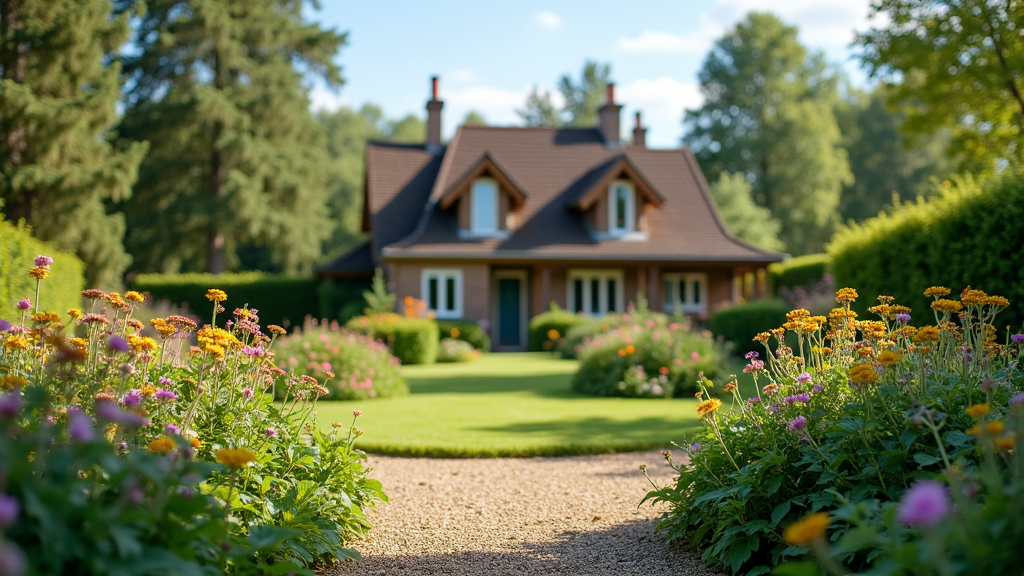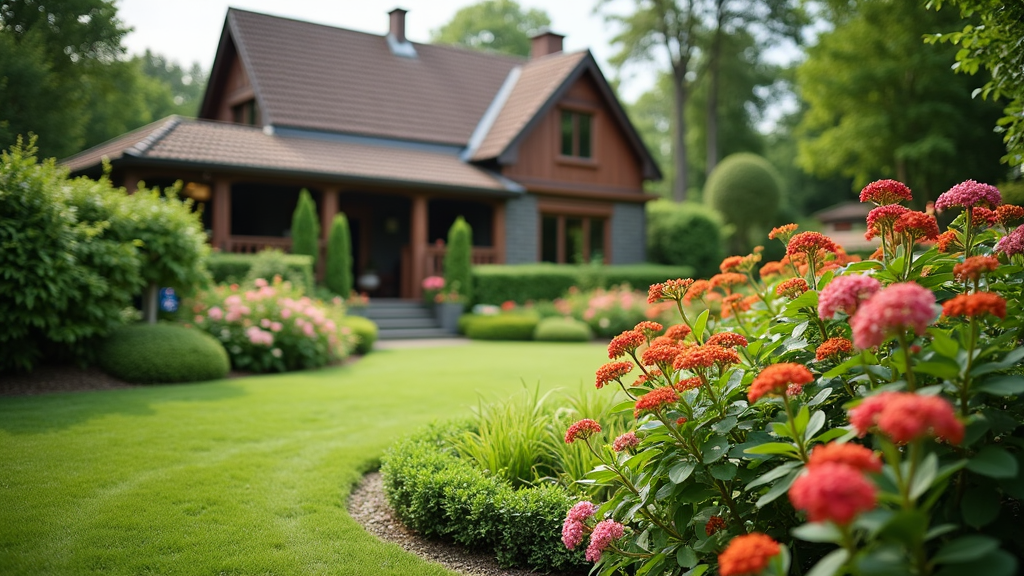Introduction: The Intersection of History and Nature
In a world where the past is often overshadowed by modernity, historical landmarks stand as poignant reminders of our collective heritage. These sites tell stories of bygone eras and capture the essence of cultural identity. However, while their architectural beauty can captivate visitors, the surrounding landscape plays an equally vital role in enhancing their significance. This article delves into how thoughtful landscape design can illuminate historical landmarks, bringing to life their stories while ensuring they remain relevant in today’s context.
Highlighting Historical Landmarks Through Thoughtful Landscaping
Landscaping isn't merely about planting flowers or trimming hedges; it's a profound art that connects people with spaces. When it comes to historical landmarks, thoughtful landscaping can transform these sites into immersive experiences. By integrating plants, pathways, and other elements that complement the architecture and history, we create environments that resonate with visitors emotionally.
The Role of Landscape Design in Historical Preservation
Historical preservation isn't just about maintaining physical structures but also nurturing their surroundings. A well-designed landscape can:
- Enhance Visual Appeal: Aesthetic landscaping draws attention to historical features. Educate Visitors: Informative signage within landscaped areas can provide context. Encourage Engagement: Thoughtfully designed spaces invite exploration and interaction.
Understanding Landscape Design Principles
To appreciate how landscaping can highlight historical landmarks, one must first grasp fundamental landscape design principles:
Unity: All elements should work harmoniously together. Balance: Symmetrical or asymmetrical arrangements provide stability. Proportion: Scale should relate directly to both the landmark and its environment. Contrast: Using different colors, textures, and shapes enhances visual interest.These principles are particularly vital for landscape design in North Carolina where varied ecosystems present unique opportunities and challenges.
The Art of Color in Landscaping Historical Sites
Color plays a crucial role in landscaping; it evokes emotions and sets the tone for any environment.
Choosing Colors That Complement History
When designing landscapes around historical sites:
- Opt for colors that echo the original materials used in construction. Use softer tones to evoke a sense of nostalgia. Incorporate seasonal color changes to keep the landscape dynamic.
Creating Seasonal Interest
A well-planned landscape provides visual interest year-round. By selecting plants that bloom at different times:

- Spring brings vibrant blossoms. Summer offers lush greens. Fall showcases warm hues. Winter presents an intriguing skeletal structure.
Case Study: The Biltmore Estate's Gardens
The Biltmore Estate in Asheville, North Carolina is a prime example of this principle in action. Its gardens feature blooming roses in spring that attract thousands annually while also offering year-round beauty through evergreen plantings.
Textural Elements in Landscape Design
Texture enriches landscapes by adding depth and dimension. Incorporating various materials—such as stone paths or wooden benches—can enhance a visitor's experience at historical sites.
Integrating Hardscape Features
Hardscapes involve non-plant elements like pathways or walls which guide visitors through the site while providing functional benefits such as:
- Improving accessibility Creating defined areas for gathering Supporting erosion control
The Importance of Softscape Elements
While hardscapes are essential, softscapes—such as lawns or flower beds—are equally important as they soften edges and introduce organic beauty. Combining both creates balance within the space.
Landscaping Strategies for Specific Historical Landmarks
Different landmarks require tailored landscaping strategies based on their unique characteristics and histories.
Colonial Williamsburg: A Living History Museum
In https://backyardbliss4.gumroad.com/p/how-to-achieve-a-golf-course-quality-lawn-at-home Colonial Williamsburg, carefully curated landscapes reflect 18th-century aesthetics while serving educational purposes through guided tours that educate visitors on colonial life.
1. Native Plant Usage
Using native plants reduces maintenance costs while reinforcing historical authenticity by reflecting what might have been found during that time period.
2. Period Gardens
Recreating period gardens with herbs and vegetables allows visitors to engage with history practically—feeling connected to the daily lives of colonists.
Monticello: Thomas Jefferson's Estate
At Monticello, Jefferson's extensive gardens illustrate his belief in agriculture's importance to American society:

1. Edible Landscapes
The integration of edible plants not only serves aesthetic purposes but also connects visitors with agricultural history.
2. Ornamental Plants
Emphasizing ornamental varieties cultivated during Jefferson’s time showcases his contributions to horticulture alongside his architectural achievements.
Landscaping Challenges Faced by Historical Sites
While thoughtful landscaping offers myriad benefits, challenges abound when dealing with historical landmarks:
Climate Change Effects on Landscapes
Adverse climate conditions pose risks to plant health and overall site integrity:
- Increased temperatures may require alterations in plant selection. Extreme weather events necessitate improved drainage systems to protect structures.
Visitor Impact on Natural Environments
Heavy foot traffic can lead to soil compaction which affects plant growth; therefore:
Clearly marked pathways help manage visitor flow. Benches provide resting spots without damaging vegetation nearby.Sustainability Practices in Landscape Design for Historical Sites
Sustainable practices ensure that landmark landscapes thrive for future generations:
Water Conservation Techniques
Implementing rain gardens captures runoff while recharging groundwater supplies—a critical consideration for North Carolina’s diverse ecosystems.
Soil Health Management
Healthy soil promotes robust plant growth; thus utilizing composting techniques enhances nutrient levels naturally without synthetic fertilizers often harmful over time.

Community Involvement: Engaging Locals Through Landscaping Projects
Community involvement fosters a sense of ownership over local historical sites which enhances preservation efforts significantly.
Volunteer Programs for Landscape Maintenance
Organizing community days invites locals to participate actively—planting flowers or clearing invasive species—and instills pride within neighborhoods surrounding significant sites alike!
FAQ Section: Common Queries About Highlighting Historical Landmarks Through Thoughtful Landscaping
What is thoughtful landscaping?
Thoughtful landscaping involves designing outdoor spaces with careful consideration toward aesthetics, functionality, history, culture, sustainability—all aimed at enhancing user experience!
How does landscaping impact historical preservation?
Well-executed landscapes preserve not only structures but contextualize them historically through education & engagement opportunities tailored towards enlightening visitors about their backgrounds!
Can I use modern designs around historic buildings?
Absolutely! However—ensure any modern designs respect existing architectural styles so they don’t clash visually or historically!
What are some examples of successful landscape designs near historic sites?
Examples include Mount Vernon’s formal gardens built by George Washington & Independence Hall’s park-like setting showcasing Pennsylvania’s rich history attractively!
How can I get involved with local historic site preservation efforts?
Local organizations often welcome volunteers who want hands-on experience caring for these treasured locations; check social media platforms/groups dedicated specifically toward this cause!
li27/ol3/hr9hr9/##
Conclusion: The Lasting Impact of Thoughtful Landscaping on Historical Landmarks
In conclusion, thoughtful landscaping holds immense potential to elevate our understanding and appreciation of historical landmarks across North Carolina—and beyond! By integrating nature with history thoughtfully—as explored throughout this article—we create spaces inviting exploration while nurturing environmental stewardship among future generations eager learn from these treasures pasts still hold relevance today! So next time you're near a landmark remember—it’s not just about what you see but also how surrounding landscapes frame narratives waiting be discovered anew every day!